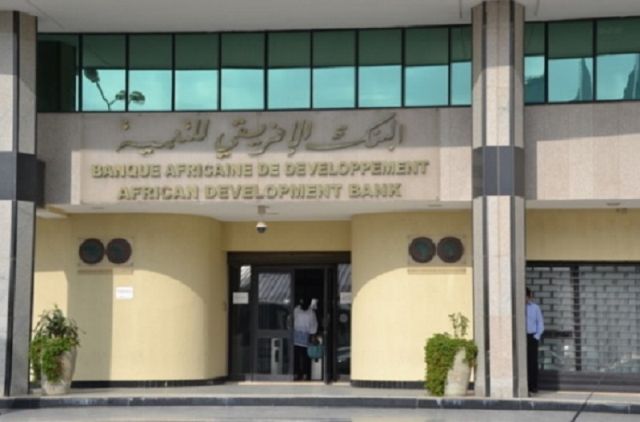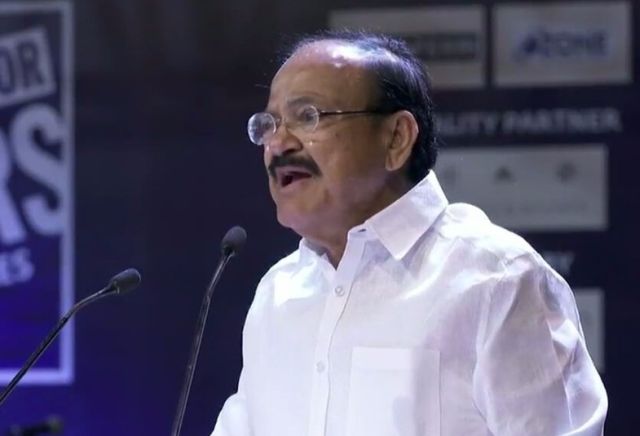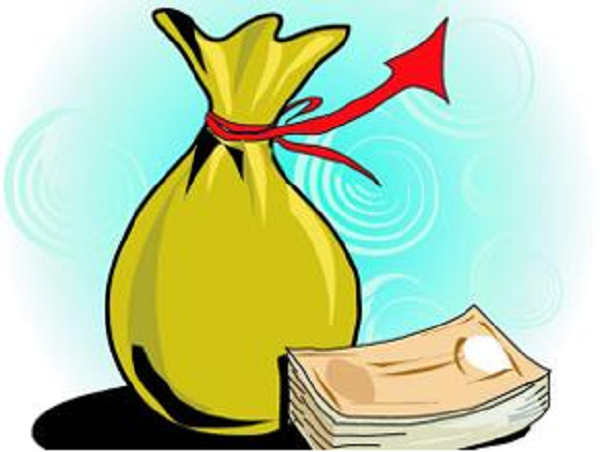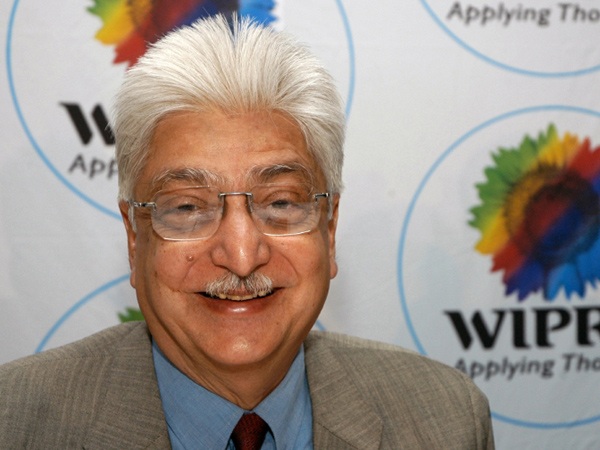
by admin | May 25, 2021 | Muslim World
 Rabat : Morocco’s gross domestic product (GDP) is expected to reach $121.4 billion in 2017 compared to $116 billion in 2016, according to the latest projection of the African Development Bank (ADB) published recently in Abidjan.
Rabat : Morocco’s gross domestic product (GDP) is expected to reach $121.4 billion in 2017 compared to $116 billion in 2016, according to the latest projection of the African Development Bank (ADB) published recently in Abidjan.
For the first time, Morocco’s GDP is forecasted to exceed MAD 120 billion. According to a statistical bulletin of socioeconomic indicators in Africa, the performance of the Moroccan economy almost doubled in the last 12 years, from $65.62 billion in 2006 to 121.42 billion in 2017.
With this significant growth in the national GDP, Morocco ranks sixth in Africa’s economic powers, following Nigeria with $581.5 billion, South African with $276.1 billion, Egypt with $263.7 billion, Algeria with $170.3 billion, and Sudan with 123.9 billion.
For the ADB, Morocco’s economic growth is expected to see a significant acceleration in 2017, settling at 4.5 percent and 3.9 percent in 2018, mainly due to a strong rebound in agricultural production. According to the bank, the kingdom will exceed the global, African, and North African average growth rates set at 3.5, 3, and 3.1 percent respectively in 2017.
Globally, the bank is expecting a general improvement of the African economic performance in the medium term, boosted by the efforts deployed by the countries in the structural transformation of their economies, which “must continue with urgency and intensity” in the face of volatile commodity prices.
According to the ADB, the dynamics of domestic demand and public investment in infrastructure have also helped support growth in many countries.
“Beyond the accumulation of physical capital, the productivity of these investments, which is important for sustainable growth, must remain a political priority,” ADB experts recommend. According to the bank, budgetary and current account deficits are expected to narrow due to strong export performance and increased government revenues.
At the regional level, East Africa remains the fastest growing region, with an estimated 5.4 percent in 2017 and 5.8 percent in 2018.
—SM/OIC-UNA

by admin | May 25, 2021 | Employment, Opinions
 By Amit Kapoor,
By Amit Kapoor,
Since the latest growth numbers have come in showing a consistent deceleration in Indias real gross domestic product (GDP) over six consecutive quarters, a cacophony of concerned voices have been heard. The din of criticism both from within and outside the government has grown so loud that Prime Minister Narendra Modi himself has had to intervene in order to defend his economic record. This warrants the question whether the situation is as grave as it is being made out to be. The simple answer is that, in some respects, there is not much that is out of the ordinary about the economic scenario, while in others the trends are cause for concern.
First and foremost are the growth figures. It is not rare for GDP growth to fall for such a long period. In fact, as recently as 2011-12, the GDP had decelerated for exactly six quarters between Q1 of 2011 and Q2 of 2012. By the end of that phase, the growth rate had fallen to a lowly 4.1 per cent. However, in the very next quarter it had bounced back to 6.1 per cent. This is not to make a simplistic argument for complacency, but to point out that growth in developing countries tends to be highly volatile and the Indian economy has shown strong resilience to such downturns. Therefore, a sense of panic is unwarranted and premature.
The second general concern with the economy is slightly more problematic. However, as we will show, it, too, is not out of the ordinary. The level of investment in the economy has become a major cause for concern. As we have pointed out in this column earlier, the level of private and household investment has hit rock bottom and only public investment has been pushing the economy forward. However, World Bank data shows that India’s gross fixed capital formation (GFCF), the leading indicator for investment, has been consistently falling over the last decade. In 2007, India’s GFCF had reached an all-time high of 36 per cent of GDP, close to China’s 39 per cent. Since then, India’s GFCF has fallen to 27 per cent while it has risen to 43 per cent for China. This points to the fact that investment sentiment never recovered in India after the 2008 crisis.
Again, a long-term negative trend is no reason for complacency. According to the RBI’s Annual Report, the non-food credit take-off across the country has been at its lowest in almost 25 years. Low credit take-off indicates that industrialists are unsure of future prospects and have postponed investments owing to weak demand. The twin balance sheet problem that is the leading cause behind the muted investment sentiment needs to be urgently resolved. Fortunately, the government has been proactive on this front and is taken some positive steps to resolve bad debts of big accounts.
Apart from the fact that growth and investment have historically shown poor trends and that we are not in a unique situation, the fundamentals of the economy are significantly stronger than usual. The government has done a good job of sticking to its fiscal deficit targets while the RBI has done the same with inflation. Moreover, the country’s foreign exchange reserves have crossed $400 billion — huge by any standard. To put things in perspective, these reserves equalled 78 percent of India’s total external debt (both short and long term) at the end of March. It may be debatable whether the country needs such a huge trove of reserves, but they are considerable enough to ensure short-run and medium-term stability of the economy.
The most concerning factor of the economy, which also has had a similar long-term history, is unemployment. Lack of jobs is an aspect of the Indian economy that simply can no longer be ignored. Since India missed its own industrial boom and directly ended up becoming a service-led economy, jobless growth has been a problem for long. This is because services are not as labour-intensive as manufacturing. However, the situation has worsened more recently. Between March 2014 and 2016 India experienced an absolute decline in employment, probably for the first time since independence, as pointed out by the Economic and Political Weekly. A fall in the absolute number of jobs for a developing country like India, where 10 million people are expected to join the workforce annually, is disastrous, to put it mildly.
All in all, the falling growth rate will reverse its trend soon as history proves. This will happen over the next few quarters as the after-effects of the twin shocks of demonetisation and GST subside. Investment will hopefully see a revival once the banks find their balance sheets improving. But the problem of job growth will pose the real challenge to the Modi government.
The recent frenzy around the deceleration of GDP growth does not do justice to this structural problem with the economy. Growth rates are understandably volatile and the fall in this period has been accentuated by demonetisation and the implementation of GST. The economy is resilient enough to extricate itself out of these shocks and, in fact, the latter will only be beneficial in the long run. The real problem lies with job creation and it was not a problem created yesterday. The problem of jobs is deep-rooted within the economy and will require equally deep-rooted reforms. The specifics of those reforms are a discussion for another day — but we need to begin by shifting our focus to the appropriate concerns.
(Amit Kapoor is chair, Institute for Competitiveness, India. The views expressed are personal. He can be contacted at amit.kapoor@competitiveness.in and tweets @kautiliya. Chirag Yadav, researcher, Institute for Competitiveness, India has contributed to the article.)
—IANS

by admin | May 25, 2021 | Economy, News, Politics

Venkaiah Naidu
New Delhi : The lack of sanitary conditions in India has a serious economic consequence too as it causes a loss of 6 per cent of the GDP every year, said Vice President M. Venkaiah Naidu on Monday.
In his address at the ‘Safaigiri Awards’ function organised by the India Today Group on the occasion of Gandhi Jayanti, Naidu said that the situation is very serious as facts stand as every family loses approximately Rs 50,000 every year due to unsanitary conditions.
“World Bank report also says that lack of sanitation cost us 6 per cent of our GDP… This is people’s cause. You are not doing any favour to anybody by participating in this because facts, the situation is very serious.
“This has to be understood by us all that we cannot achieve sustained progress if we adopt a ‘business as usual’ approach. We should correctively set for an innovative solution that will make a tangible difference,” Naidu added.
The Vice President also blamed the “everything goes” attitude of the people which is dragging the country behind and said that this will not work anymore.
“This is mission without any commission, so there should not be any remission in this mission. Because this has to become a people’s movement. Unfortunately … this has become the habit of the people ‘sab kaam sarkar karega, hum bekaar baithe to chalega. Aisa nahi chalega” (Government will do everything, I will do nothing. This won’t work),” he said.
“We need to, one work towards creating an atmosphere, change the mindset, secondly, create infrastructure and thirdly we have to think in future going for punitive action also.
“Otherwise in a country of our size with a 130 crore population where people think that we have freedom to do anything.. but at the same time you are affecting others’ health also and you are bringing bad name to the society,” he said.
Naidu also lauded the women for their newfound demand for toilets and refusing to marry if there are none at their in-laws’ houses.
“That will solve some of the problem definitely because everybody needs to get married… It’s not mandatory but it’s required,” he added.
He congratulated those who won the awards saying that they will serve as role models for others.
—IANS

by admin | May 25, 2021 | Markets, Opinions, Technology
 By Tanay Sukumar, Four of five Indians could afford the internet if data costs fell by 66 percent, according to a Facebook-commissioned report on Internet access. But Indian telecom operators already run data services at a 11 percent loss, making cost-cutting difficult.
By Tanay Sukumar, Four of five Indians could afford the internet if data costs fell by 66 percent, according to a Facebook-commissioned report on Internet access. But Indian telecom operators already run data services at a 11 percent loss, making cost-cutting difficult.
The statistics mean that a data plan currently priced at Rs.100 should not cost more than Rs.34 if India has to make the internet affordable for 80 percent of its population.
But the adverse economics imply this cannot happen without intervention from the government – whose Rs.20,000 crore ($2.9 billion) plan to connect each of Indias 250,000 panchayats with broadband by 2018 is three years behind schedule.
The internet reached 29 percent of Indians – 354 million users – in September 2015, IndiaSpend reported. It could rise to 39 percent, or 462 million users, by June 2016.
But if it were to reach 100 percent, Indias GDP could be increased by an extra $1 trillion by 2020, according to the Facebook-commissioned report, published this month. To put this in perspective, Indias GDP crossed the $2 trillion mark for the first time in 2014, according to World Bank data.
To optimise data costs, the report considered 500 MB data plans, classifying them affordable if each cost less than five percent of a persons monthly income.
The report, titled Connecting the world: Ten mechanisms for global inclusion, is based on a study done by PricewaterhouseCoopers for Facebook.
Internet access drives up GDP
The Facebook report said that global GDP could grow by an additional $6.7 trillion by 2020, if the internet reaches every human being. If that happens, the GDP of China and India could reach $2.089 trillion – nearly a third of the hypothetical world output.
Also, universal internet access can bring half a billion people worldwide out of poverty, according to the report.
High data costs in developing countries
However, data costs in India, as in several other developing countries, are a major barrier.
While 92 percent people in South Asia live in range of a 2G network, no more than 17 percent can afford a 500 MB monthly data plan. Two other regions – sub-Saharan Africa (11 percent) and Middle East and North Africa (17 percent) – are comparable to South Asia. In contrast, 94 percent of North Americans can afford such a data plan.
Prices need to drop by close to 70 percent of todays average retail price for 80 percent of the worlds population, said the report. In Ethiopia, a 500 MB data plan currently costs 50 times what it should for widespread internet affordability. (Widespread is defined as reaching 80 percent of citizens.)
As it stands currently, only two percent Indians can afford to watch a five-minute standard definition video daily. If you add a two-minute HD video as well, less than one percent can afford it.
The report said that in India, internet usage is growing but many are disengaged and many more remain unconnected. According to a February survey by the Pew Research Centre, 22 percent respondents in India said they use the internet at least occasionally or have a smartphone.
But are lower costs possible?
The report cited a JP Morgan analysis to show that Indian data operators make a negative margin of 11 percent from data sales. Giving examples of other developing countries with negative margins, the report said: Operators in most of these markets already charge very low prices and have negative margins on data, which makes it difficult for them to cut prices further.
Indonesias negative margin is 197 percent; in comparison, profit margins in Japan are 46 percent.
In India, nearly 70 percent of connections are on 2G networks, but these data services are no longer profitable for telecom operators. Bharti Airtel, for instance, needs more than 1,000 rural users per site per month to ensure its 2G data services break even. Providing voice services over 2G is more profitable – the company would need no more than 480 subscribers per site per month to break even.
Drawing connections with Zuckerbergs Internet.org agenda?
The study done for Facebook advocates internet access in developing countries, which may be seen as connected to the social media giants controversial Internet.org project. The Guardian observed: The focus on cost reductions (in the report) marries with Facebooks own Internet.org project, which is aimed at partnering carriers in developing nations to give low-cost internet access.
Internet.org had come under criticism from net neutrality advocates around the world. In India, its platform Free Basics was blocked by the Telecom Regulatory Authority of India (TRAI) in February this year. Founder Mark Zuckerberg had then written: Connecting India is an important goal we wont give up on, because more than a billion people in India dont have access to the internet.
According to the study, which echoed Zuckerbergs thoughts, 56 percent of the world is still not online. Bringing them online would create millions of new jobs, develop vast new markets, and lift millions out of poverty.
(30.05.2016 – In arrangement with IndiaSpend.org, a data-driven, non-profit, public interest journalism platform. Tanay Sukumar is a freelance journalist. The views expressed are those of IndiaSpend. The author can be contacted at respond@indiaspend.org)

by admin | May 25, 2021 | Corporate, Corporate Buzz, Markets, News

Azim Premji
Bengaluru:(IANS) There was a strong demand for IT services in Europe and the US where the economy gained a lot of strength, Wipro chairman and IT czar Azim Premji said on Wednesday.
“With the US economy gaining lot of strength, we are seeing strong demand for IT services globally, particularly in continental Europe,” Premji told reporters on the margins of the software major’s 69th annual general meeting here.
Noting that digital technology has emerged as a major trend in IT services, Premji said the company was investing substantially in digital domain in a big way to capitalise on the opportunities unfolding in the sector worldwide.
“We have a venture fund to invest in early stage tech start-ups. We also have enough strength (funds) in the balance sheet for strategic acquisitions,” Premji said.
Admitting that sharp fall in crude oil prices helped the country in reducing its import bill and the trade deficit, the Wipro chairman said the growth was still not felt on the ground.
“Fall in oil prices has helped country but the jury is still out on the growth of the GDP (gross domestic product). We need to, however, give the government more time,” Premji said.
Earlier, in his address at the AGM, Premji told the shareholders that he gave away nearly 40 percent of his equity holding in the company to philanthropy in two transactions, including 21 percent earlier to the Azim Premji Foundation and Azim Premji Philanthropic Initiative.
“I have given up an additional 18 percent of my equity stake in the company for charity to earmark 39 percent of my holding (valued at Rs.53,284 crore) to the charitable trust,” Premji said, drawing applause from the investors.
The 69-year-old IT czar is the first Indian to sign the Giving Pledge, sponsored by billionaires Warren Buffet and Microsoft co-founder Bill Gates to invite the world’s richest to donate majority of their wealth to charity.
“Over the last 15 years, I have tried to put this belief into action through my personal philanthropic work,” Premji told the shareholders.
The Premji-led promoter group, including his family members, holds around 73.40 percent of the equity stake in the IT outsourcing major.

 Rabat : Morocco’s gross domestic product (GDP) is expected to reach $121.4 billion in 2017 compared to $116 billion in 2016, according to the latest projection of the African Development Bank (ADB) published recently in Abidjan.
Rabat : Morocco’s gross domestic product (GDP) is expected to reach $121.4 billion in 2017 compared to $116 billion in 2016, according to the latest projection of the African Development Bank (ADB) published recently in Abidjan.



